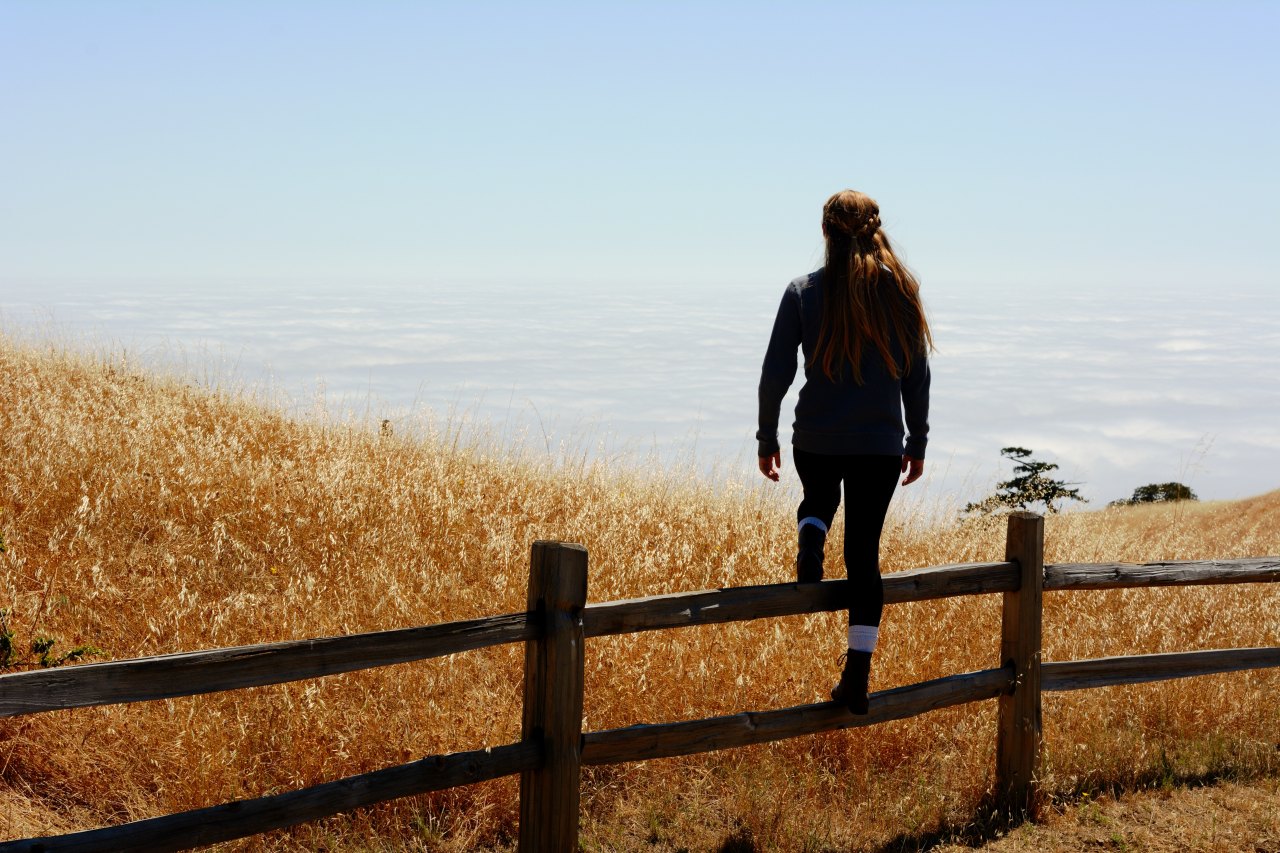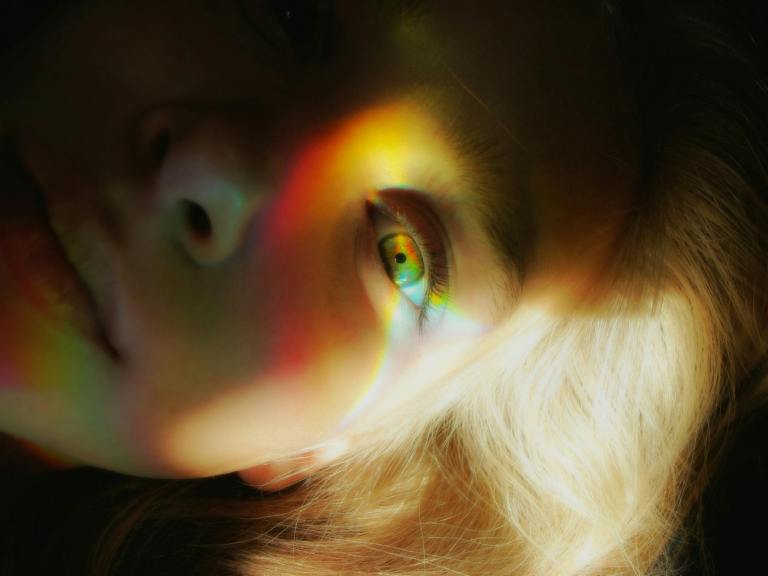
7 Things You Learn About (Real) Connection From Being Off The Grid For A Week
I could not tell you exactly how far into the Marin Headlands I was when I realized that my maps app couldn’t get me back. I just knew it was far. Knew there was no Uber to hail or GPS to follow. Knew there were about half a dozen winding, rocky trails, a bike, me, the Golden Gate bridge and another number of miles before I was back home.
It’s a funny thing – to feel completely helpless in the age of convenience. There’s nothing we can’t Google, no bit of knowledge that isn’t milliseconds from our fingertips. We’ve facilitated our desire for growth and knowledge and ease and access to expand exponentially over the past decade or so, but at the same time, we’ve inadvertently highlighted another core truth of the human condition: we’re plagued by our illusion of separateness. (Also, we’re shockingly lazy.)
Preceding my little trek (I made it back safely, by the way, exhausted and nauseas, but fine) I spent a few days in Northern California taking a course on a campus that was exclusively Wi-Fi and cell service free. It’s an experience I’ve grown to believe everybody should have: to see just how many hours they waste scrolling, how much of their anxiety they are placating by their social illusions, how little they can really listen to themselves, what it means to actually connect with another human being – no distractions, no texting, no photos. To have a truly profound experience and not feel the need to document it or share it, and to know what it means to really feel something, as opposed to just what it appears to be.

There’s really nothing we want more than to feel connected. To truly be part of a greater something-or-other, accepted, wanted, loved. And in seeking this online – as it’s generally less intimidating to confront the demons of our social anxieties behind a screen – we’re actually backtracking from what we set out to achieve in the first place. (Science says the digital age is making us increasingly less fulfilled and more depressed – as opposed to actually making us “connected” in “real time.”)
So here, a few things I’ve realized about this in my (relatively short) time off the grid.
1. We’re constructing self-image through object-referral.
As your mind’s idea of who you are is entirely a construct – it must exist within a context. It is gauged by comparing and contrasting to that around it. The choice, however, is what you are defining yourself in light of: that which is around you, or that which is inside you. A healthy self-relationship is self-referring, meaning, you are your basis for contentment, you determine how you feel and what you perceive based on genuine perception. Object-referral, which is what most of us do – especially online – is gathering a collective idea of what “should” make you happy based on what others project, and then conditioning your mental-emotional response system accordingly.
2. We are becoming increasingly less able to “hold space” for one another.
“Holding space” is a Metta practice that consists of creating and then maintaining space to express mindful respect, kindness, self-care and love for oneself, and then to extend it – unconditionally – it to all others that you meet. (I learned about this approximately three times a day over the past week, so as it’s very fresh for me, I must note that the feeling of truly being listened to is unfathomably powerful.)
Holding space is essentially honoring other beings, and yourself, by giving them your complete attention through comfortably maintaining silence and taking a non-judgmental approach while considering everything they have to say.
You can tell when somebody isn’t holding space for another person when they are distracted or filling the conversation with “uh huh,” “mmm” or repeating bits of what they are hearing (though probably not really listening to). This signals a mind that is trying to come up with a response rather than to truly comprehend what is being communicated.
More or less, it’s being completely present and wholly devoted to the moment and being you are with – yourself or another – and it is the basis for true intimacy and connection, one that we’re getting less and less comfortable with.
3. Our intuitive guidance systems are atrophying through non-use in practical settings.
More than anything else, we seem to be collectively plagued with the “but what do I want and what should I do and how do I know this is right for me?!” bug. It’s all a symptom of being severely disconnected with our internal guidance systems, as the less we have to listen to them to survive, the more we disregard them in general.
The ability to listen to ourselves is an art form; one that can only truly be cultivated when you can differentiate what parts of ourselves are “speaking” and for what reason.
It is your fear speaking? Your instinct? Your pain? Your memory? Once you can discern where your ideas or feelings are rooted, you can know which voice to value and trust in the given moment.
A great way to think of it is as though your intuition is the master and your mind is the servant; if you can’t guide yourself instinctively, it’s because you’re busy worshipping the servant and trying to make the master work for it as well.
4. Few people have truly integrated, discerning mindsets – ones that can tell the difference between ego, ethno, world and cosmo-centric perspectives.
Simply, ego is “self,” ethno is “us,” world is “all of us,” and cosmo is “all of it.” If you can identify and speak to how someone coming from any of these states of mind would respond to a given situation, you have tremendous insight into being able to be present with someone even if you think their opinion or stance is “uninformed” or “ignorant.”
These mindsets each serve a purpose, and are meant to be used interchangeably, though the reality is that not everybody gets to the point of developing them all fully. But taking it upon yourself to do so aids in cultivating empathetic understanding for people and their motivations (and aids you in moments of true indecision).
5. The digital age has done a phenomenal job of keeping us living in the “storyline,” the need to align our plots with what “other readers” would want to consume.
Have you ever considered making a decision only to run the story through your mind the way other people would be perceiving it? I know I have. She did this then graduated from here then moved here then did this cool thing, okay, that makes sense, other people will be okay with it, onward!
Consider the whole concept of “profiles” on social media: you have to definitively outline who you are and what you do for other people to judge, consume and interact with.
If we aren’t aware, those self-constructs based around “profiles” and “updates” will limit us into believing we have to align with them – in other words, with what would be collectively acceptable to those we imagine we are “presenting” ourselves to. It’s really amped up the whole “spotlight effect” anxiety – keeping us tip toeing through daily life, so as not to misstep and know we’re about to be judged by the masses behind all the pixels and profiles.
6. There is absolutely a difference between truly experiencing something and experiencing it second-hand under the guise of “wanting to document the moment” – there is no comparison between an actual experience and a collection of pixels that represents a message you are trying to send.
I am a big fan of taking photos and wanting to remember special experiences – I do it often – but when it comes down to whether you’re doing something to be present in it and enjoy it, or doing it so you can snap a great photo or look as though you’re a little cooler, a little riskier, a little more fun than you are in real life… that’s where the water gets murky.
Because it will feel good. Crafting social validation feels amazing. And as the likes and hearts pile up, you will feel both a sense of relief (I’m acceptable!) and maybe even joy (Look how great I am! They have to love me now!)
The trouble is that if you aren’t careful, you’ll mistake the two, when the latter is a shallow version of the former – one that just compounds and reinforces existing insecurities.
7. The most transformative power rests in stillness.
“Stillness” does not necessarily meaning non-action, but rather, quietness. Mindfulness. Meditation. Taking one task at a time. Considering each thought fully as it passes. Feeling each emotion as it arises. Slowing everything down to more fully be present in it all.
The way it was explained to me was like this: if your mind is a body of water, consider every bit of “noise” (action, engagement, thought, feeling, etc.) to be dropping a pebble in. Eventually, there will be so many ripples you can’t tell which is which or be able to see the bottom or focus on anything in particular – it just all becomes a blurry mess.
But when you reside in stillness, when you are mindful and intentional, dropping just one pebble in will allow you to truly have the opportunity to feel the entirety of the experience. You’ll see the pebble’s ripples expand all the way outward and completely encompass the body, only to eventually fade and remind you that all is temporary. We were built not for the illusion of multitasking, but for fully experiencing anything and everything, before we’re so muddled by our desire to experience more and more that we’ve culminated more crap, rather than just stopped to feel the grandeur in the simplicity of what already existed. ![]()











